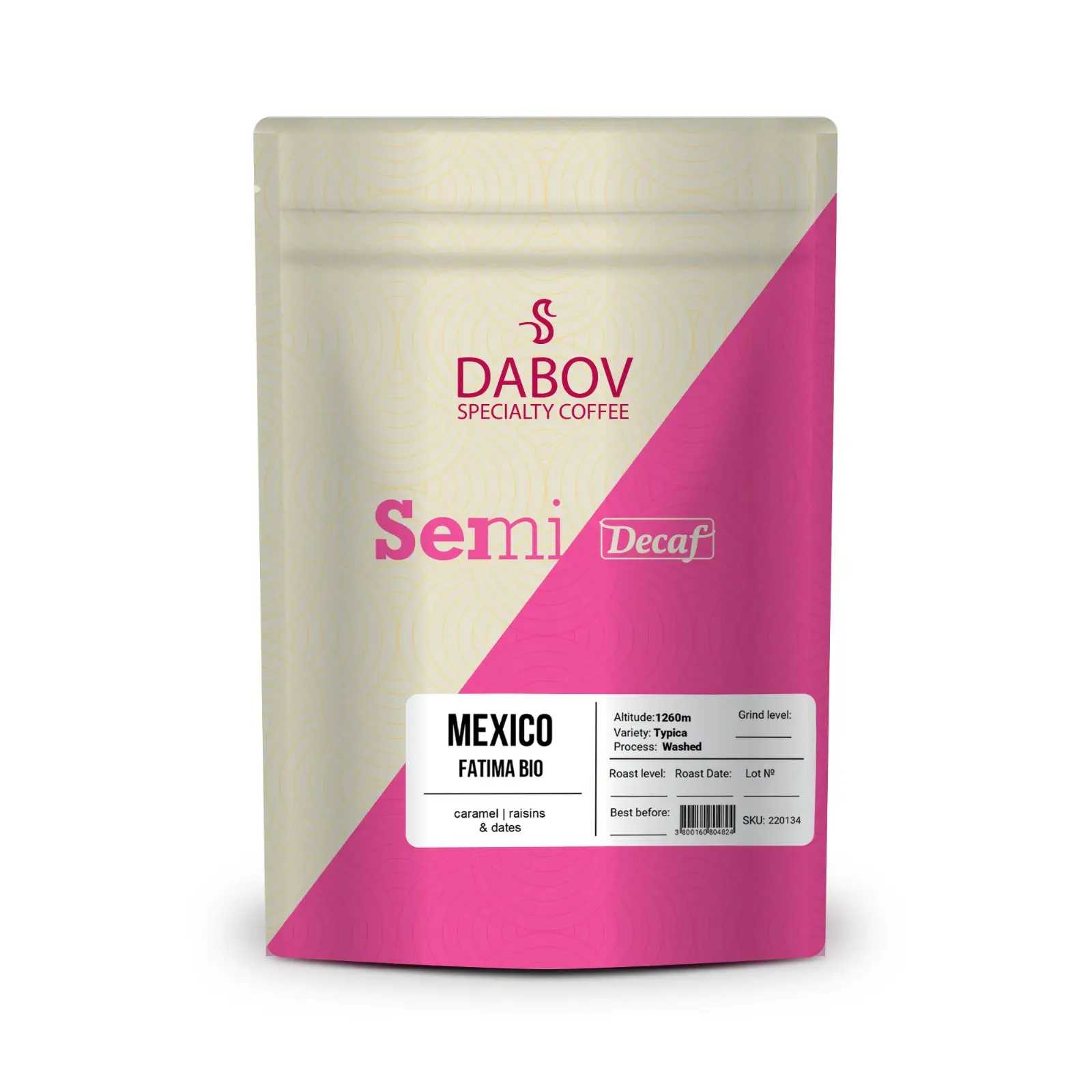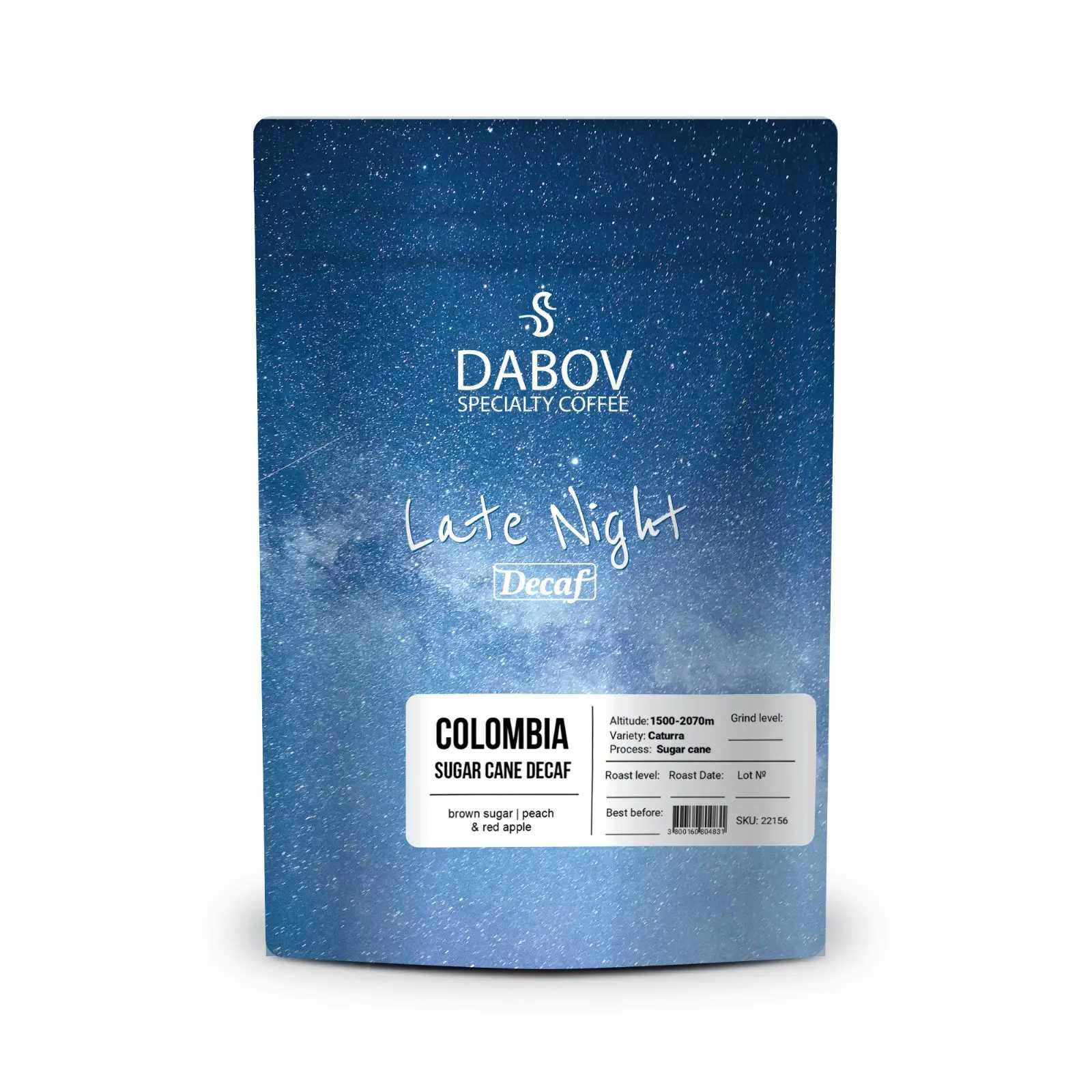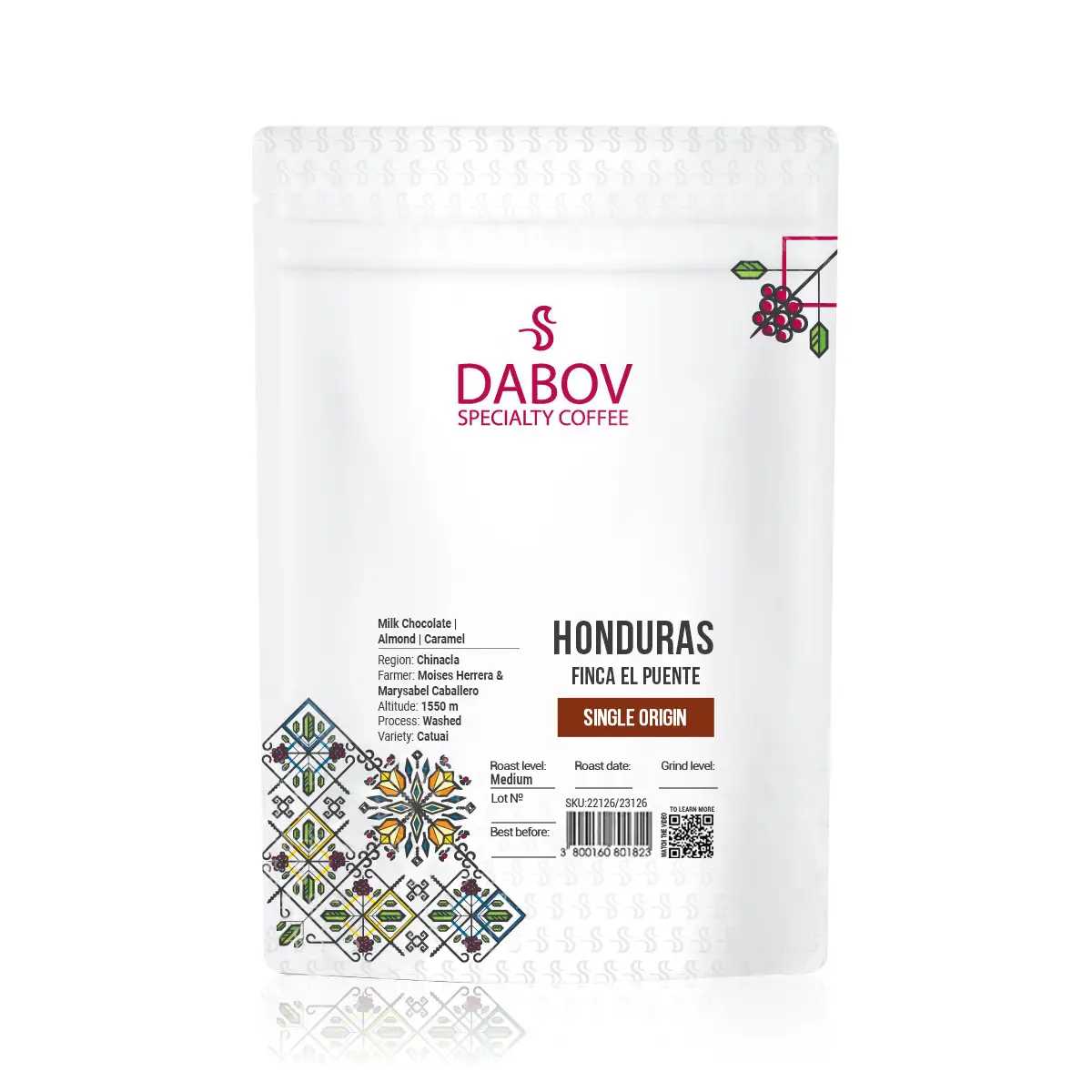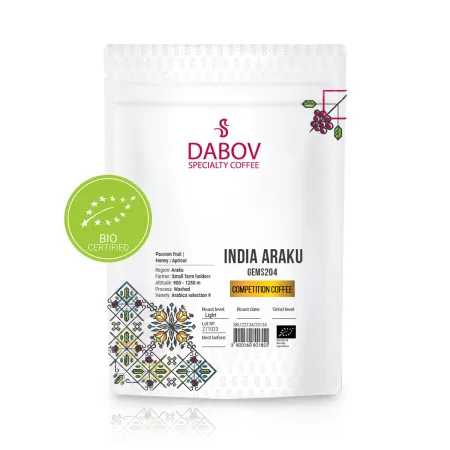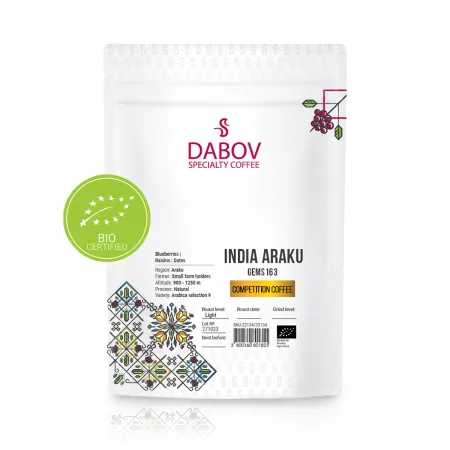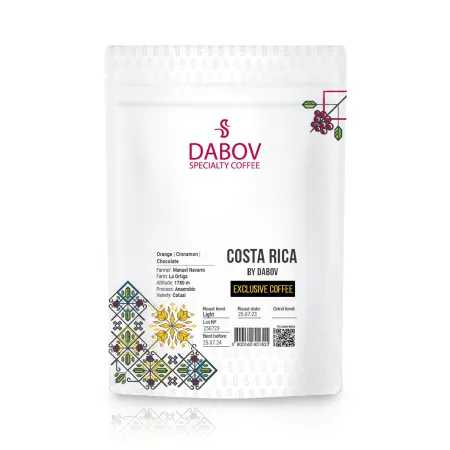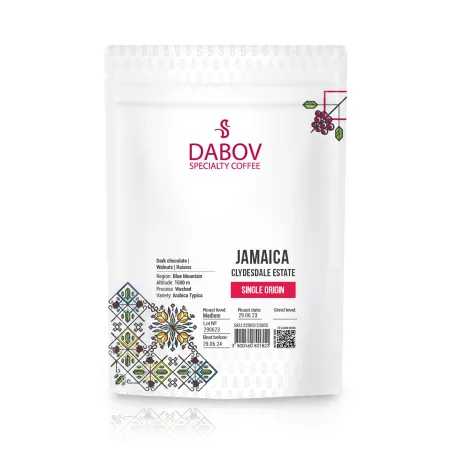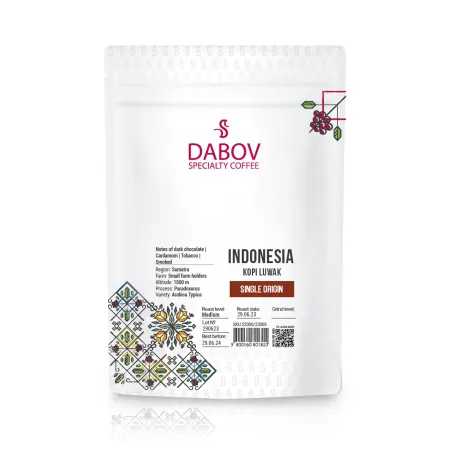The Basics of Coffee Roasting A StepbyStep Guide
Discover the art and science of coffee roasting in our comprehensive guide! Learn the basics of coffee roasting, from selecting the finest green beans to recognizing perfect roast stages. Whether you're a casual drinker or a dedicated enthusiast, understanding the coffee roasting steps can transform your brewing experience. This beginner roasting guide equips you with essential tools, methods, and tips to master the craft at home. Explore how different roasting techniques influence flavor profiles and discover the joy of experimenting with various beans. Ready to take your coffee journey to the next level? Dive in and become the roaster you've always wanted to be!
Coffee roasting is an art and science that transforms humble green coffee beans into the aromatic, flavorful beverage we know and love. For both casual drinkers and serious coffee enthusiasts, understanding the basics of coffee roasting is essential to appreciating the complexity and nuance of this beloved drink. This comprehensive guide will take you through the intricate process of coffee roasting, from selecting the right beans to achieving the perfect roast profile. Whether you're a curious beginner or an experienced home roaster looking to refine your skills, this article will provide you with the knowledge and techniques to elevate your coffee game.
1. Understanding Coffee Roasting
1.1 What is Coffee Roasting?
Coffee roasting is the transformative process that turns raw, green coffee beans into the dark, aromatic beans we use for brewing. At its core, roasting is a heat-driven chemical reaction that fundamentally alters the structure and composition of the coffee bean. During this process, the beans undergo significant physical and chemical changes, developing the complex flavors, aromas, and colors that we associate with roasted coffee.
The roasting process begins with green coffee beans, which are the seeds of coffee cherries that have been harvested, processed, and dried. These beans are dense, grassy-smelling, and pale green in color. As they are exposed to heat, the beans begin to change. They lose moisture, expand in size, and undergo a series of chemical reactions that create hundreds of different compounds responsible for coffee's distinctive taste and smell.
One of the most crucial chemical reactions during roasting is the Maillard reaction. This complex process, which occurs between amino acids and reducing sugars, is responsible for the development of many flavor compounds and the characteristic brown color of roasted coffee. As the roast progresses, caramelization of sugars also occurs, contributing to the sweetness and body of the coffee.
The art of coffee roasting lies in controlling these reactions to achieve the desired flavor profile. Roasters must carefully manage variables such as temperature, time, and airflow to bring out the best qualities of each coffee bean variety. The skill of the roaster can make the difference between a flat, uninspiring cup and a complex, vibrant coffee experience.
1.2 The Importance of Roasting
The importance of roasting in the world of coffee cannot be overstated. It is during the roasting process that the true potential of coffee beans is unlocked, transforming them from a raw agricultural product into the complex and aromatic beverage we cherish. Roasting is the crucial step that bridges the gap between the coffee farm and your cup, and it plays a pivotal role in determining the final flavor profile of the coffee.
One of the primary reasons roasting is so important is its ability to develop and enhance the inherent flavors of the coffee bean. Each coffee variety, grown in different regions and under various conditions, has its own unique set of flavor precursors. These are compounds present in the green bean that have the potential to become flavor and aroma molecules during roasting. The roasting process activates these precursors, creating a wide array of flavors ranging from fruity and floral notes to nutty and chocolatey undertones.
Moreover, roasting affects the body and mouthfeel of the coffee. As the beans are roasted, oils begin to migrate to the surface, contributing to the richness and viscosity of the brewed coffee. The degree of roast also influences the perceived acidity and sweetness of the coffee. Lighter roasts tend to preserve more of the bean's original acidity and delicate flavor notes, while darker roasts develop more body and bittersweet characteristics.
Understanding and mastering the roasting process is crucial for coffee lovers because it allows for customization and optimization of the coffee experience. By controlling the roast profile, one can highlight specific flavor attributes or balance different taste components to create a harmonious cup. This level of control is particularly important when working with single-origin coffees, where the goal is often to showcase the unique terroir and varietal characteristics of the beans.
Furthermore, freshly roasted coffee offers superior flavor compared to pre-roasted beans that may have been sitting on shelves for weeks or months. Coffee begins to lose its peak flavor and aroma shortly after roasting due to oxidation and the release of volatile compounds. By roasting at home or purchasing from local roasters who roast in small batches, coffee enthusiasts can ensure they're experiencing coffee at its freshest and most flavorful.
For those deeply passionate about coffee, learning the basics of coffee roasting opens up a world of experimentation and discovery. It allows for a deeper appreciation of the coffee-making process from seed to cup and provides insights into how different roasting techniques can dramatically alter the final product. This knowledge not only enhances one's enjoyment of coffee but also fosters a greater connection to the global coffee community, from farmers to roasters to baristas.
2. Coffee Roasting Steps
2.1 Selecting the Right Green Coffee Beans
The journey to a perfect cup of coffee begins long before the roasting process, with the crucial step of selecting high-quality green coffee beans. This decision is fundamental to the final flavor profile and overall quality of your roasted coffee. When choosing green coffee beans, there are several key factors to consider, each playing a significant role in the potential of your roast.
Origin is one of the most important aspects to consider when selecting green coffee beans. Different coffee-growing regions around the world produce beans with distinct flavor profiles due to variations in climate, soil composition, altitude, and processing methods. For example, Ethiopian coffees are often known for their bright, fruity notes and floral aromas, while Colombian coffees tend to have a well-balanced profile with notes of chocolate and nuts. Understanding these regional characteristics can help you choose beans that align with your flavor preferences or roasting goals.
The variety of coffee plant is another crucial factor. Arabica and Robusta are the two main species of coffee, with Arabica generally considered superior in terms of flavor complexity and sweetness. Within the Arabica species, there are numerous varietals such as Bourbon, Typica, Gesha, and Caturra, each with its own unique flavor attributes. Some varietals are prized for their exceptional cup quality and command higher prices, while others are valued for their disease resistance or high yield.
Grade is a measure of the quality and consistency of green coffee beans. Grading systems vary by country, but generally take into account factors such as bean size, density, number of defects, and overall appearance. Higher grade coffees typically have fewer defects and more uniform bean size, which can lead to more even roasting and better flavor development. Common grade designations include Specialty Grade (the highest quality), Premium Grade, and Commercial Grade.
When selecting green coffee beans, it's also important to consider the processing method used. The three main processing methods are washed (or wet) process, natural (or dry) process, and honey process. Each method imparts different characteristics to the bean:
- Washed Process: This method involves removing the cherry pulp before drying the beans. It typically results in clean, bright flavors with pronounced acidity.
- Natural Process: Here, the entire coffee cherry is dried with the bean inside. This can impart fruity, wine-like flavors and create a heavier body in the cup.
- Honey Process: A method between washed and natural, where some of the mucilage is left on the bean during drying. This can result in a sweeter cup with some of the fruity notes of natural processing.
Understanding these processing methods can help you choose beans that will deliver the flavor profile you're aiming for in your roast.
Lastly, consider the crop year and storage conditions of the green coffee beans. Freshness is key, and beans that have been properly stored in cool, dry conditions will generally produce better results than older or improperly stored beans.
By carefully considering these factors - origin, variety, grade, processing method, and freshness - you can select green coffee beans that have the potential to produce exceptional roasted coffee. Remember that the quality of your green beans sets the upper limit for the quality of your roasted coffee. No amount of skillful roasting can compensate for poor quality green beans, so investing time in selecting the right beans is a crucial first step in the coffee roasting process.
2.2 The Coffee Roasting Process
The coffee roasting process is a carefully orchestrated sequence of events that transforms green coffee beans into the aromatic, flavorful product we use for brewing. Understanding the coffee roasting steps is crucial for anyone looking to master this art. Let's break down this process into its fundamental stages, from preheating the roaster to cooling the beans.
2.2.1 Preheating the Roaster
Preheating the roaster is a critical first step in the coffee roasting process. This stage sets the foundation for a consistent and controlled roast. The ideal preheating temperature can vary depending on the type of roaster and the desired roast profile, but generally falls between 350°F to 500°F (175°C to 260°C).
For drum roasters, which are commonly used in both commercial and home roasting setups, preheating ensures that the drum is at a consistent temperature throughout. This helps prevent uneven heating of the beans when they're first introduced. In air roasters, preheating helps establish the right airflow and temperature conditions before the beans are added.
The preheating process also serves to remove any residual moisture or odors from previous roasts, ensuring a clean slate for each new batch. It's important to note that different roast profiles may require different starting temperatures. For example, a lighter roast might start at a lower temperature to allow for a longer development time, while a darker roast might begin at a higher temperature for a quicker progression through the roast stages.
2.2.2 The Roast Cycle
Once the roaster is preheated, the green coffee beans are introduced, and the roast cycle begins. This cycle can be broken down into several distinct phases, each characterized by specific physical and chemical changes in the beans.
- Drying Phase: This initial stage lasts for about 4-8 minutes, depending on the roaster and batch size. During this phase, the beans absorb heat and begin to lose their moisture content. The beans remain green but gradually turn to a pale yellow color. There's little to no aroma at this stage.
- Yellowing: As the beans continue to heat and dry, they turn a more pronounced yellow color. This stage typically occurs around 300°F (150°C). The beans begin to emit a grassy smell as they release water vapor and carbon dioxide.
- First Crack: This is a crucial moment in the roast, occurring around 385°F (196°C). The beans make an audible cracking sound as their structure begins to break down, and they expand in size. This marks the beginning of light roasts and the development of more complex flavors.
- Development Phase: After the first crack, the roaster must carefully control the rate of rise (RoR) to develop the desired flavor profile. This phase is where much of the coffee's character is determined. Sugars continue to caramelize, and oils begin to migrate to the surface of the beans.
- Second Crack: If the roast continues, a second crack will occur around 435°F-445°F (224°C-229°C). This signals the beginning of dark roasts. The beans release oils more rapidly, and flavors become more bittersweet and less acidic.
- Finishing the Roast: Depending on the desired roast level, the roaster will end the process at different points. This could be anywhere from just after the first crack for very light roasts, to well into the second crack for very dark roasts.
2.2.3 Recognizing Roast Stages
Recognizing different roast stages is a skill that combines visual, auditory, and olfactory cues. Here's a breakdown of how to identify various roast levels:
Light Roasts:
- Color: Light brown, no oil on surface
- Aroma: Grainy, grassy, or bread-like
- Flavor Profile: Higher acidity, more origin characteristics preserved
- Typical End Temperature: 356°F-401°F (180°C-205°C)
Medium Roasts:
- Color: Medium brown, may have some oil on surface
- Aroma: More balanced, nutty, or chocolatey notes emerging
- Flavor Profile: Balanced acidity and body, some caramel sweetness
- Typical End Temperature: 410°F-428°F (210°C-220°C)
Dark Roasts:
- Color: Dark brown to nearly black, oily surface
- Aroma: Smoky, burnt sugar notes
- Flavor Profile: Low acidity, pronounced bitterness, thinner body
- Typical End Temperature: 437°F-482°F (225°C-250°C)
As you gain experience, you'll also learn to use the sounds of the roast (first and second crack) and the aroma changes to guide your roasting decisions.
2.3 Cooling and Storing Roasted Coffee
The final step in the coffee roasting process is crucial for preserving the quality of your freshly roasted beans. Cooling the beans quickly after roasting is essential to halt the roasting process and prevent over-roasting. Most roasters have a built-in cooling tray or system that uses forced air to rapidly bring down the temperature of the beans.
During cooling, it's important to stir or agitate the beans to ensure even cooling and to allow excess carbon dioxide to escape. This process, known as degassing, continues for several days after roasting, with the majority occurring in the first 24 hours.
Once cooled, proper storage is key to maintaining freshness. Here are some tips for storing your roasted coffee:
- Use airtight containers: Store beans in containers that prevent air and moisture from entering. Ceramic canisters with airtight seals or bags with one-way valves are ideal.
- Keep away from light: Store in a dark place, as light can degrade coffee oils.
- Avoid heat: Store at room temperature, away from heat sources.
- Don't refrigerate or freeze: This can introduce moisture and odors to the coffee.
- Buy or roast in small batches: For optimal freshness, aim to use coffee within 2-4 weeks of roasting.
By following these cooling and storage practices, you can ensure that your carefully roasted coffee retains its peak flavor and aroma for as long as possible.
3. Beginner Roasting Guide
3.1 Equipment Needed for Home Roasting
For those embarking on their home coffee roasting journey, selecting the right equipment is a crucial first step. While professional roasters use large, sophisticated machines, home roasters have several accessible options that can produce excellent results. Here's a comprehensive look at the essential tools and equipment needed for home coffee roasting:
- Roasting Device:a) Popcorn Popper: This is one of the most popular entry-level options for home roasting. Hot air popcorn poppers can be repurposed to roast small batches of coffee. They're inexpensive and easy to use, making them ideal for beginners. However, they offer limited control over temperature and roast profiles.
b) Stovetop Roasters: These are specialized pans designed for roasting coffee on a stovetop. They often feature a hand-crank mechanism to keep the beans moving during roasting. Stovetop roasters provide more control than popcorn poppers but require constant attention and manual agitation.
c) Dedicated Home Roasters: These are purpose-built machines for coffee roasting. They range from small, affordable models to more advanced units with programmable profiles and data logging capabilities. Brands like Fresh Roast, Behmor, and Gene Cafe offer popular options in this category. These machines provide the most control and consistency for home roasters.
- Thermometer:An accurate thermometer is essential for monitoring bean temperature during roasting. Infrared thermometers are popular for their ease of use and ability to measure surface temperature without contact. For more precise measurements, some roasters use thermocouples that can be inserted directly into the bean mass.
- Timer:Keeping track of time is crucial in coffee roasting. While many dedicated roasters have built-in timers, a separate digital timer or stopwatch can be useful, especially when using less sophisticated roasting methods.
- Cooling System:Rapidly cooling the beans after roasting is important to stop the roasting process and preserve the desired flavor profile. This can be as simple as two metal colanders for transferring hot beans back and forth, or a dedicated cooling tray with a fan for more efficient cooling.
- Storage Containers:Airtight containers are necessary for storing freshly roasted beans. Look for containers with one-way valves that allow CO2 to escape without letting oxygen in. Mason jars or specialized coffee storage containers work well.
- Green Coffee Beans:While not equipment per se, a supply of high-quality green coffee beans is essential. Look for suppliers that offer a variety of origins and processing methods to experiment with different flavor profiles.
- Chaff Collector:Coffee chaff, the thin outer skin of the coffee bean that comes off during roasting, can be messy. Some roasters have built-in chaff collectors, but for methods like popcorn poppers, you might need to devise your own system to catch the chaff.
- Roast Log or Journal:Keeping detailed notes of each roast is crucial for improving your skills. A dedicated notebook or digital app can help you track variables like time, temperature, and taste results.
- Safety Equipment:Roasting produces smoke and can get quite hot. Ensure you have good ventilation (roasting outdoors or near an open window is often recommended), and consider using heat-resistant gloves when handling hot equipment.
- Scale:A digital scale is useful for measuring green beans before roasting and tracking weight loss during the roast, which can be an indicator of roast development.
Remember, you don't need all of this equipment to start roasting at home. Many beginners start with just a popcorn popper, a timer, and some green beans. As you develop your skills and passion for roasting, you can gradually invest in more sophisticated equipment. The key is to start simple, experiment, and enjoy the process of learning to roast your own coffee.
3.2 Step-by-Step Roasting Guide for Beginners
Learning how to roast coffee at home can be an exciting and rewarding experience. This step-by-step guide will walk you through the process, providing actionable tips for success along the way. While this guide assumes the use of a popcorn popper for roasting, the principles can be applied to other roasting methods as well.
Step 1: Prepare Your Workspace
- Choose a well-ventilated area, preferably near an open window or outdoors.
- Gather all necessary equipment: popcorn popper, green coffee beans, metal colanders for cooling, a timer, and a thermometer if available.
- Measure out your green coffee beans. Start with about 1/2 cup (4 oz) for most popcorn poppers.
Step 2: Preheat the Roaster
- Turn on your popcorn popper and let it run empty for about 30 seconds to a minute to preheat.
- If using a thermometer, aim for a starting temperature around 350°F (175°C).
Step 3: Add the Green Coffee Beans
- Carefully pour the measured green beans into the preheated popper.
- Start your timer as soon as you add the beans.
Step 4: Monitor the Roast
- Watch the beans closely as they begin to change color and listen for the first crack.
- The beans will first turn from green to yellow, then to light brown, and progressively darker shades of brown.
- Around 3-5 minutes in, you should hear the first crack - a sound similar to popcorn popping.
- After the first crack, pay close attention to the color and aroma of the beans to determine when to stop the roast.
Step 5: Determine Roast Level
- For a light roast, stop shortly after the first crack completes.
- For a medium roast, wait about 30 seconds to 1 minute after the end of the first crack.
- For a dark roast, continue until you hear the beginning of the second crack.
Step 6: Cool the Beans
- Once you've reached your desired roast level, immediately pour the beans into a metal colander.
- Stir or shake the beans in the colander to cool them quickly. You can use a fan to speed up this process.
- Transfer the beans between two colanders to remove the chaff (the light, papery skin that comes off the beans during roasting).
Step 7: Rest and Store
- Allow the beans to rest for 12-24 hours before grinding and brewing. This allows CO2 to escape and flavors to develop.
- Store the cooled beans in an airtight container away from direct light and heat.
Tips for Success:
- Start with a small batch to get a feel for the process before roasting larger amounts.
- Keep detailed notes on each roast, including the type of bean, roast time, and your observations on flavor.
- Experiment with different roast levels to find your preference. Remember, lighter roasts preserve more of the bean's original flavors, while darker roasts develop more body and bittersweet notes.
- Clean your roasting equipment thoroughly after each use to prevent flavor contamination in future roasts.
- Always prioritize safety. Never leave the roaster unattended and be cautious of the hot equipment and beans.
Remember, roasting is both an art and a science. It takes practice to develop the skills to consistently achieve your desired roast profile. Don't be discouraged if your first few attempts aren't perfect - each roast is a learning experience that will help you improve your technique.
4. Coffee Roasting Tips
4.1 Avoiding Common Mistakes
As you embark on your coffee roasting journey, being aware of common pitfalls can help you achieve better results and avoid frustration. Here are some frequent mistakes in the roasting process and how to avoid them:
- Uneven Roasting:Problem: Some beans are darker than others, resulting in inconsistent flavor.Solution: Ensure proper agitation of beans during roasting. In a popcorn popper, this means stirring occasionally. In a drum roaster, check that the drum is rotating at the correct speed.
- Roasting Too Fast:Problem: Beans are dark on the outside but underdeveloped inside, leading to grassy or sour flavors.Solution: Slow down the roast by lowering the heat, especially after the first crack. This allows for more even heat distribution and better flavor development.
- Roasting Too Slow:Problem: Beans taste baked or flat due to prolonged exposure to heat without proper development.Solution: Increase heat or reduce batch size to ensure the roast progresses at an appropriate rate.
- Ignoring the Importance of Cooling:Problem: Beans continue to roast after being removed from heat, leading to over-roasting.Solution: Have a cooling setup ready before you start roasting. Cool beans quickly and evenly to stop the roasting process immediately.
- Relying Solely on Color:Problem: Judging roast level only by color can be misleading, as different beans darken at different rates.Solution: Use multiple cues including smell, sound (first and second crack), and if possible, bean temperature to determine roast level.
- Neglecting Cleanliness:Problem: Residue from previous roasts can affect flavor and potentially cause fires.Solution: Clean your roasting equipment thoroughly after each use, paying special attention to chaff buildup.
- Overloading the Roaster:Problem: Too many beans prevent even heat distribution and proper movement.Solution: Follow the manufacturer's recommendations for batch size, or start small and gradually increase while monitoring results.
- Ignoring Ventilation:Problem: Smoke buildup can affect the flavor of the beans and be a health hazard.Solution: Always roast in a well-ventilated area, preferably near an open window or outdoors.
- Mishandling Green Coffee Storage:Problem: Improperly stored green coffee can absorb odors or moisture, affecting roast quality.Solution: Store green coffee in a cool, dry place in breathable bags or containers.
- Expecting Immediate Results:Problem: Freshly roasted coffee needs time to degas and develop flavor.Solution: Allow roasted coffee to rest for at least 12-24 hours before brewing, and up to several days for espresso.
By being mindful of these common mistakes and taking steps to avoid them, you can significantly improve the quality and consistency of your home-roasted coffee. Remember that roasting is a skill that develops over time, so be patient with yourself and enjoy the learning process.
4.2 Experimenting with Flavors
One of the most exciting aspects of home coffee roasting is the opportunity to experiment with flavors and create your own unique roast profiles. By adjusting variables such as roast level, bean origin, and roast time, you can significantly influence the taste of your coffee. Here's a guide to help you explore the world of flavor in coffee roasting:
- Understanding Flavor Development:
- Light Roasts: Preserve more of the bean's original flavors, often featuring bright acidity, floral notes, and fruity undertones.
- Medium Roasts: Develop a balance between acidity and body, often with nutty or chocolatey notes emerging.
- Dark Roasts: Emphasize bold, bittersweet flavors with reduced acidity and increased body.
- Exploring Single Origins:
- Try roasting beans from different countries and regions to experience their unique flavor profiles.
- For example, Ethiopian beans often have bright, fruity notes, while Colombian beans tend to be well-balanced with nutty undertones.
- Blending Experiments:
- Create your own blends by combining beans from different origins or roast levels.
- Start with a 50/50 blend of two different beans and adjust the ratio based on your taste preferences.
- Adjusting Roast Profiles:
- Experiment with different roast curves by adjusting heat application throughout the roast.
- Try a slow start with a fast finish, or vice versa, and note how it affects flavor development.
- Post-Roast Blending:
- Roast the same beans to different levels and then blend them post-roast for complex flavor profiles.
- Exploring Processing Methods:
- Try beans with different processing methods (washed, natural, honey) and note how they respond to various roast levels.
- Seasonal Experimentation:
- Coffee is a seasonal crop. Try the same origin at different times of the year to experience how harvest seasons affect flavor.
- Cupping Sessions:
- Conduct regular cupping sessions to train your palate and identify subtle flavor differences between roasts.
- Roast Degree Variations:
- Roast the same bean to slightly different levels (e.g., 15 seconds apart) to understand how small changes affect flavor.
- Temperature Profiling:
- If your roaster allows, experiment with different temperature profiles throughout the roast and note the impact on flavor.
Remember to keep detailed notes of your experiments, including the bean origin, roast level, time, temperature (if possible), and your tasting notes. This will help you replicate successful roasts and learn from less successful ones.
Experimenting with flavors in coffee roasting is a journey of discovery. Don't be afraid to try new things and trust your palate. With time and practice, you'll develop a deeper understanding of how different variables affect coffee flavor, allowing you to create roasts tailored to your personal taste preferences.
4.3 Keeping a Roast Journal
Maintaining a detailed roast journal is an invaluable practice for anyone serious about improving their coffee roasting skills. A well-kept roast log serves as a record of your experiences, successes, and areas for improvement. It allows you to track variables, replicate successful roasts, and refine your technique over time. Here's a comprehensive guide on how to keep an effective roast journal:
- Essential Information to Record:
- Date and time of roast
- Bean origin, variety, and processing method
- Green bean weight and roasted bean weight (to calculate weight loss percentage)
- Roasting device used
- Ambient temperature and humidity (if possible)
- Roast profile (time and temperature data points throughout the roast)
- Time to first crack and second crack (if applicable)
- Total roast time
- Cooling method and time
- Final roast level
- Detailed Roast Notes:
- Record any adjustments made during the roast (e.g., changes in heat application)
- Note any unusual occurrences or observations during the roast
- Describe the aroma at different stages of the roast
- Record the bean color progression
- Tasting Notes:
- Allow coffee to rest for the appropriate time (usually 24-48 hours) before tasting
- Record brewing method used for tasting
- Note flavors, aromas, body, acidity, and overall balance
- Rate the coffee on a consistent scale (e.g., 1-10) for different attributes
- Include notes on how the coffee changes over time (1 day, 3 days, 1 week post-roast)
- Visual Documentation:
- Consider including photos of the beans at different stages of the roast
- If possible, include a photo of the ground coffee and the brewed cup
- Roast Profile Graphs:
- If your roaster provides data logging, include temperature vs. time graphs
- Note key events on the graph (e.g., first crack, color changes)
- Improvement Ideas:
- After each roast and tasting, note any ideas for improvement
- Record hypotheses about how changes might affect the next roast
- Consistency in Format:
- Use a consistent format for each entry to make comparison easier
- Consider using a spreadsheet or specialized coffee roasting software for easier data analysis
- Regular Review:
- Set aside time to regularly review your journal entries
- Look for patterns in successful roasts and areas for improvement
- Experiment Tracking:
- When trying new techniques or beans, clearly mark these entries
- Follow up with notes on how the experiments turned out
- Long-term Storage:
- Ensure your journal is stored safely and backed up if digital
- Consider using archival-quality paper for physical journals to preserve your records long-term
By consistently maintaining a detailed roast journal, you create a valuable resource that will accelerate your learning and help you develop your skills as a coffee roaster. Over time, your journal will become a personalized guide to your coffee roasting journey, full of insights and discoveries that will help you achieve the perfect roast time and time again.
5. Conclusion
Mastering the basics of coffee roasting is a journey that combines science, art, and passion. As we've explored in this comprehensive guide, the process of transforming green coffee beans into aromatic, flavorful roasted coffee is intricate and rewarding. From understanding the fundamental changes that occur during roasting to learning how to select quality green beans and execute a successful roast, each step in the process contributes to the final cup of coffee.
We've covered the essential steps of coffee roasting, from preheating the roaster to cooling the beans, and discussed how to recognize different roast levels. For beginners, we've provided a step-by-step guide and tips on essential equipment, while also addressing common mistakes to avoid. The importance of experimentation and keeping a detailed roast journal has been emphasized as key practices for improving your skills and developing your unique roasting style.
Remember that coffee roasting is both a skill and an art form. It requires practice, patience, and a willingness to learn from both successes and failures. Each roast is an opportunity to refine your technique and deepen your understanding of the complex world of coffee flavors.
As you embark on or continue your coffee roasting journey, embrace the process of continuous learning and experimentation. Don't be afraid to try new beans, adjust your roast profiles, and push the boundaries of your skills. The world of coffee is vast and diverse, offering endless opportunities for exploration and discovery.
Whether you're roasting for personal enjoyment or considering it as a potential business venture, the knowledge and skills you develop will enhance your appreciation for coffee and allow you to create truly exceptional brews. The ability to roast your own coffee gives you unparalleled control over the quality and flavor of your daily cup, connecting you more deeply to the entire coffee production process from seed to cup.
So, fire up your roaster, grab some quality green beans, and start your adventure in coffee roasting. With dedication and practice, you'll soon be creating roasts that rival those of professional roasters, tailored perfectly to your personal taste preferences. Happy roasting!
6. Additional Resources
6.1 Recommended Reading & Resources
To further your knowledge and skills in coffee roasting, here are some valuable resources:
- Books:
- "The World Atlas of Coffee" by James Hoffmann
- "The Coffee Roaster's Companion" by Scott Rao
- "Modulating the Flavor Profile of Coffee" by Rob Hoos
- Websites:
- Sweet Maria's (www.sweetmarias.com): Offers green coffee beans and extensive educational resources.
- Coffee Research (www.coffeeresearch.org): Provides scientific information about coffee.
- Roast Magazine (www.roastmagazine.com): Industry publication with articles on roasting techniques and trends.
- Online Courses:
- Boot Coffee Campus (www.bootcoffee.com): Offers professional-level courses on coffee roasting.
- Roast Institute (www.roastinstitute.com): Provides online and in-person training for coffee roasters.
- Forums and Communities:
- Home-Barista.com: Active forum with a dedicated section for home roasting.
- r/roasting on Reddit: Community of home roasters sharing tips and experiences.
- Software:
- Artisan (artisan-scope.org): Free, open-source software for logging and analyzing roasts.
- RoastLog (roastlog.com): Professional roasting software for data logging and analysis.
6.2 Community Engagement
Engaging with the coffee roasting community can greatly enhance your learning experience:
- Local Roasteries:
- Many local roasteries offer tours or workshops. Reach out to see if they have educational opportunities.
- Coffee Festivals:
- Attend coffee festivals in your area to meet roasters, try different coffees, and attend workshops.
- Specialty Coffee Association (SCA):
- Join the SCA for access to educational resources and networking opportunities.
- Online Communities:
- Participate in online forums and social media groups dedicated to coffee roasting.
- Cupping Sessions:
- Attend or organize cupping sessions to develop your palate and learn from others.
- Roasting Competitions:
- Consider participating in roasting competitions to challenge yourself and learn from peers.
By utilizing these



